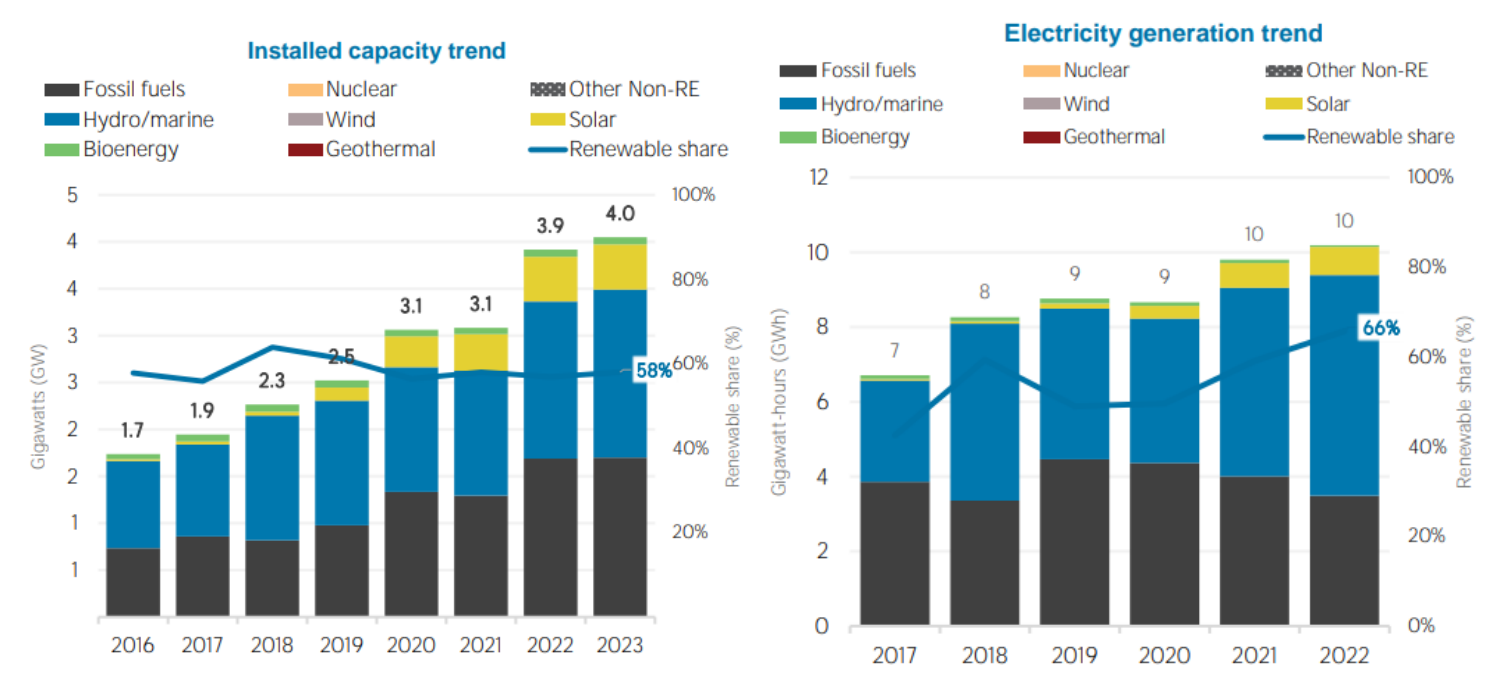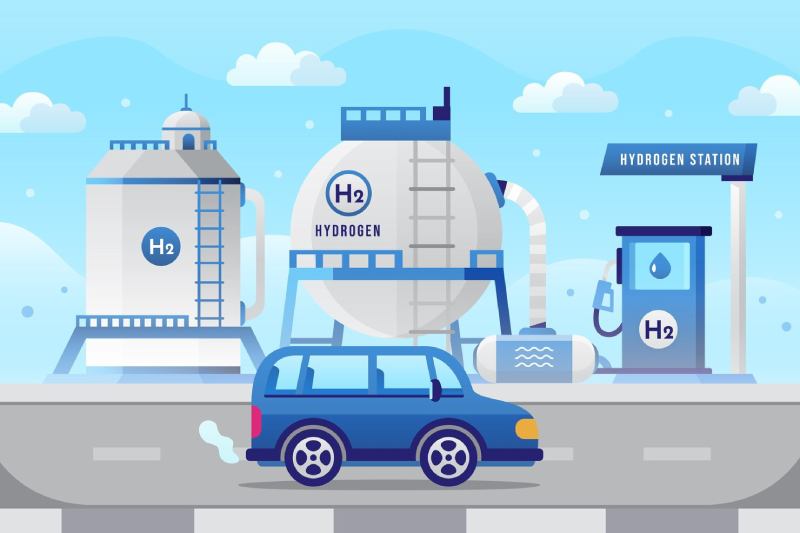Cambodia’s energy sector has experienced significant growth and diversification in recent years, transitioning from a heavy reliance on imported fossil fuels to a more varied energy mix.
As of 2022, Cambodia’s Gross Domestic Product (GDP) was approximately USD29.5 billion1. The economy is predominantly driven by agriculture, manufacturing, and services, sectors that are increasingly dependent on reliable and affordable energy.
Cambodia’s total primary energy supply has been growing at an average annual growth rate of 4.44 per cent from 2019 to 2050.[ 2 ] Hydropower makes up for more than 57 per cent of the electricity generation in the country as on 2022. [ 3 ]

Figure: L-R: Installed Capacity in Cambodia; Electricity generation in Cambodia [ 4 ]
Cambodia’s hydrogen sector is in its nascent stages, with no significant production or consumption infrastructure currently in place. However, the country’s growing renewable energy capacity, especially solar and hydropower, presents an opportunity to develop a green hydrogen economy in the future. Currently, hydrogen usage in Cambodia is limited to small-scale applications in industrial processes such as welding and as a fuel for micro-scale uses.
Cambodia does not yet have a dedicated national hydrogen policy or strategy. However, the government has shown interest in promoting renewable energy and energy efficiency, which indirectly supports the potential development of a green hydrogen sector. Key national plans that align with green hydrogen development include:
1 National Strategic Development Plan (NSDP) 2019–2023:
1 GDP (current US$) - Cambodia | Data
2 Cambodia Energy Efficiency Policy (2022)2:
3 Industrial Development Policy (IDP) 2015–2025:
• Aims to modernize Cambodia’s industrial sector, potentially incorporating advanced clean energy
technologies, including hydrogen.
4 Renewable Energy Master Plan (Under Development):
• Expected to provide specific guidance on renewable energy adoption, including the potential for hydrogen as a storage and energy carrier solution.
1 Electricity Law of Cambodia (2001):
2 Environmental Regulations:
• Existing environmental impact assessment (EIA) requirements for energy projects will likely apply to hydrogen projects, particularly in production and storage facilities.

Cambodia’s renewable energy sector is rapidly expanding, creating a foundation for future green hydrogen production. Leveraging its abundant solar, hydropower, and biomass resources, the country has significant potential to integrate green hydrogen into its energy landscape.
Hydropower constitutes approximately 44 per cent of Cambodia’s total electricity generation capacity as of 2023, with an installed capacity of approximately 1.8 GW3. The consistent energy output from hydropower plants offers a stable electricity source to power electrolysers for green hydrogen production.
Solar energy contributes approximately 7 per cent to Cambodia’s electricity generation. Solar PV has an installed capacity of over 480 MW as of 20234. Cambodia’s high global horizontal irradiance (averaging approximately 5 kWh/m²) positions the country well for further solar expansion5. Solar power could be utilised during off-peak periods to produce green hydrogen, optimizing renewable energy usage.
Cambodia’s agricultural economy generates significant biomass waste, which could be used in gasification processes to produce green hydrogen, thereby reducing waste, and providing a sustainable fuel source.
Cambodia’s electricity grid has expanded significantly, reaching rural areas, and ensuring grid stability. The country is also connected to regional grids through imports and exports of electricity with Vietnam, Laos, and Thailand.
As of November 2024, Cambodia does not have established facilities for manufacturing electrolysers, which are essential for green hydrogen production.
Cambodia is in the early stages of exploring green hydrogen as part of its broader energy transition strategy. While no large-scale green hydrogen projects have been commissioned yet, there are emerging developments, partnerships, and potential opportunities in the sector.
Cambodia’s growing renewable energy capacity has attracted international interest in green hydrogen production. Development agencies such as the Asian Development Bank (ADB) and International Renewable Energy Agency (IRENA) have shown interest in supporting hydrogen feasibility studies and capacity building in the country.
Cambodia is part of regional dialogues within ASEAN on the integration of green hydrogen into the energy transition framework, creating opportunities for collaboration with neighbouring countries.